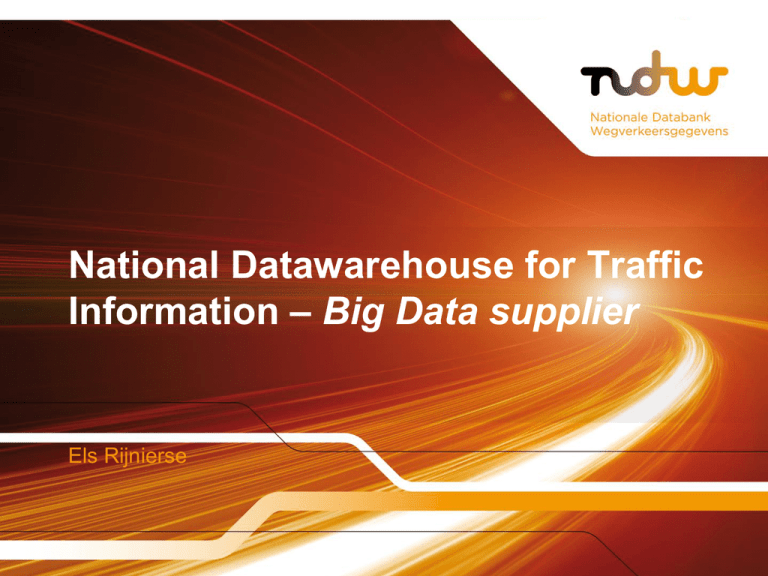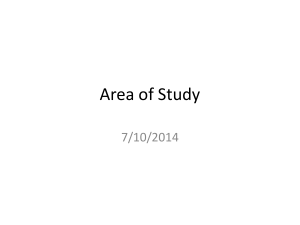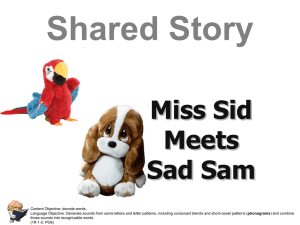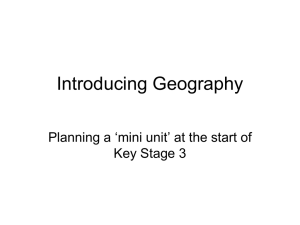NDW - CBS
advertisement

National Datawarehouse for Traffic Information – Big Data supplier Els Rijnierse Contents • Introducing NDW • Experiences with our big data • Challenges, choices and changes Posting • The last slide will ask you to post your impression, to share what struck you most with all conference attendees NDW is a Collaborative venture • 24 Road authorities National 6 out of 12 provinces Cities, either independent or in an alliance • Covering >6000 km road network (total Dutch road network is 130.000 km) Introducing NDW What is our aim? • Develop and maintain a joint database for traffic data. Up-to-date, complete and unambiguous with known quality • Create efficiency by working together and sharing information • Stimulate effective use of this data for: - real time traffic management - real time traffic information - analyses, policy making and research Introducing NDW Trafficmanagement Central source for all road authorities Introducing NDW Objectives • • • • • Less traffic jams Predictability Safer roads Less emission More collaboration Data voor doorstroming Happy road users Introducing NDW Supervisory Board Accountability Supervision Supply Selection from data Participating goverments (IDP) Commercial parties(EDP) Common data need NDW Individual data supply Road authorities Individual Data need Infrastructure supply Demand Service providers System provider (external) Introducing NDW Data types - 1 Every minute, traffic data from more than 24,000 measuring sites is collected, processed and within 75 seconds distributed to the users • Traffic flow per lane per vehicle class on 14818 measuring sites • Travel time (realised or estimated) per lane on 9424 measuring sites • Traffic speed per lane per vehicle class on 13410 measuring sites (measuring sites may produce more kind of data) Introducing NDW Data collection Introducing NDW Some figures on figures • Over 24,000 measurement sites • Giving aprox. 460,000 figures on speed, flow and travel time each minute • => >27 Million per hour • => >600 million per day • => >240 billion per year + meta data on these figures Real-time traffic data (February 2012: 5 cm snow) Introducing NDW Data types - 2 On occurrence data on availability of the road is collected • • • • Road works, planned and actual Reports of congestion and accidents Status (open/closed) of bridges Near future: Status (open/closed) of peak lanes and regular lanes Introducing NDW Cooperation between CBS en NDW • NDW collects and distributes raw data, we do not aim to do any statistical analysis. • CBS started with small NDW datasets (1 day) and is now working on a larger set (3 months) to determine new methodology • Conclusion: Forget everything you learned about statistics Experiences When to start calculating (Experiences with big data – 1) Traditional statistical methodology: gather and store everything and perform the statistical analyses on certain times. When using big data: • This traditional way of working does not produce statistics quicker. • This requests huge datastores for raw data storage • Strongly advised is starting with statistical analyses the moment data is streaming in and storing only aggregated in between results • Adapt you algorithms to be able to handle correct any unpredictable gaps in the raw data that will occur Experiences Technical issues (Experiences with big data - 2) • Traditional relational databases but also statistical tools (SPSS/SAS/R) are not fast enough, run far out of memory and do not have enough performance for quick retrieval of raw data. • When using a data storage technique suitable for fast recovery of raw data then some coding and programming has to be done on the raw data. • Recalculating because of wrong choices or methods takes an increasing amount of time as the amount of raw data grows quickly every day. Experiences Challenges, Choices, Changes Devils Triangle Contents awareness Statistical knowledge IT knowledge Challenges, Choices, Changes Challenges, Choices, Changes Challenge Government policy is that public data are open data, which means our raw data are on the WWW (www.ndw.nu/datalevering) Anybody can download them and produce surveys, statistics, tables, draw conclusions and publish these (long) before statistical office does. Be aware of publicity this might cause, discussions on ‘the truth’ and the status of a response or statement from the statistical office. Take on the challenge of producing real time statistics Challenges, Choices, Changes Challenges, Choices, Changes Choice Traditional storage of raw data used for statistics is at the statistical office. Big data should be left at their origin and withdrawn when needed. Challenges, Choices, Changes Challenges, Choices, Changes Change Look for appropriate IT infrastructure and develop a new way of handling data Challenges, Choices, Changes www.sendsteps.com Prepare to react; keep your phone ready! Internet TXT 1 Go to sendc.com 2 Log in with Session 3 Type WS3 <space> your answer 1 Text to +316 4250 0030 2 Type Session <space> WS3 <space> your answer Posting messages is anonymous No additional charge per message When using Big Data for our statistics the biggest change in our way of working will be…. Internet Go to sendc.com and log in with Session Type WS3 <space> Your answer TXT Send to 06 4250 0030: Session Type WS3 <space> Your answer Challenges, Changes and Choices when using these amounts for Statistics Forget everything you learned on statistics: When to start calculating Immediately soon after data is available, continuously Were to store what (intermediate or raw) data Raw data at the providers, intermediate results at the statistical office Tools and IT techniques No more SPSS, R, and SAS, but programming and working with new tools Algorithms Asymptotically, the time complexity as well as the space complexity should be of a lower order, because of the large volumes of data As/When open data is government policy: Be aware of others producing also statistics, quicker and with other conclusions How to produce 1 representative figure on traffic intensity from this:







